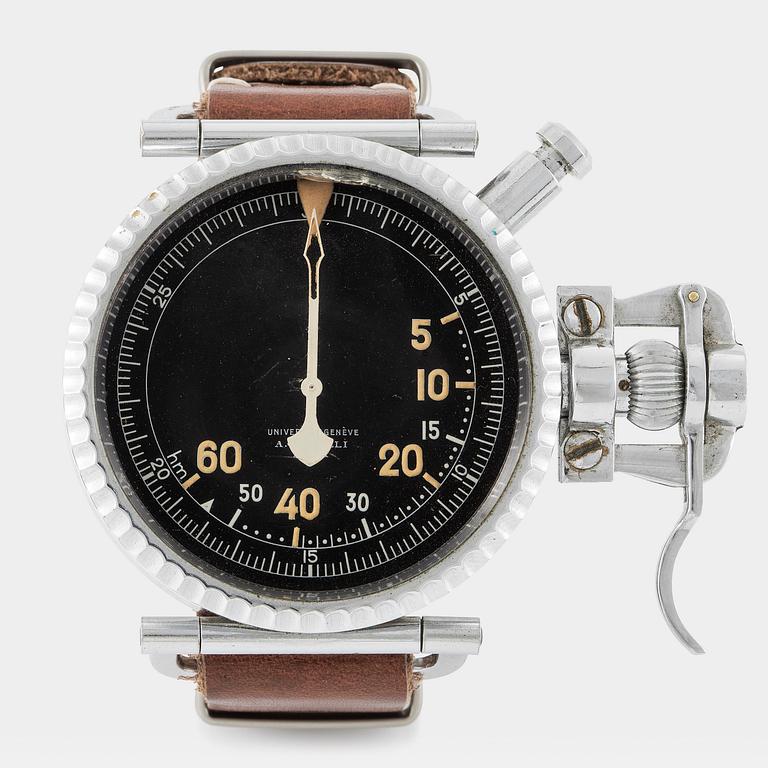Universal, Genève, "A.Cairelli, Roma", "World War II Bombardier", "Italian Air Force", ca 1939.
Size: 52 mm
Material: base metal
Movement: manual
Year: circa 1939
Bracelet: Nato strap
Reference number: 39901
Case number: 742'714
Radium dial in good condition. chip in the crystal. Engraving. Hand with some loss of luminous material.
The movement is running at the time of cataloguing, Bukowskis does not guarantee the future function of the movement. Please note that the movement has not been tested for timekeeping accuracy and may need a service at the buyer's expense. Watches have been opened to examine movements therefore no warranties are made that the watches are water-resistant. Potential buyers should inspect each watch to satisfy themselves as to condition. For more information, please read our Conditions of Purchase.
More information
Manufactured in approximately 1939 by Universal Genève for the Italian Air Force, and retailed by the Roman watch supplier A. Cairelli, this rare WWII bomb timer was designed with a very specific purpose in mind: to measure the interval between a bomb’s release and its impact.
The black dial features luminous numerals that represent distance in hectometers (each equal to 100 metres), allowing the operator to match the timing to the aircraft’s altitude. By turning the crown, the user would set the arrow to the appropriate distance, then start the stopwatch as the bomb was dropped. A press of the button halted the hand at any moment, and another turn of the crown made the hand run backwards counting down to the exact second of impact. Finally, one more push of the button stopped the countdown, and another turn of the crown reset everything.
A Brief History of A. Cairelli
Established by Antonio Cairelli around 1932 at 144 Via del Corso in Rome, A. Cairelli functioned as a critical link between Switzerland’s finest watchmakers and the Italian Armed Forces. The firm imported specialised timepieces, most notably from Zenith and Universal Genève, according to rigorous military specifications and also provided service and maintenance. Despite its pivotal role, the company eventually closed in the 1960s or ’70s.


















































